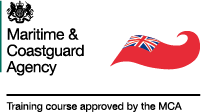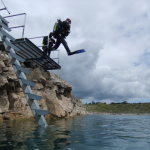What is the Boat Masters License?
The Boat masters license is needed for passenger and non-passenger, commercial vessels that operate on inland waterways and certain coastal areas. It is a requirement as defined under the Merchant Shipping regulations, which came into force in 2007. In order to Master a vessel, commercially in categorised waters, you must be qualified under the BML Regulations.
How to obtain a Boat Masters License?
To qualify for a BML you will need to submit the following documents to your local Marine Office:
- an application form MSF 4364
- evidence of completing the three basic safety courses – personal survival/water safety, first aid and fire safety MCA approved BML Short Courses or STCW95 Basic Safety Training equivalent courses
- a medical certificate Seafarer Information – ENG1 or ML5
- a Task Record Book MSF 4367
- work record or other evidence of time served – Tier 1 applicants only MSF 4366
- meet minimum age requirements*
- any Pilotage Exemption Certificates (PEC) (if held)
You will also be required to complete both oral and practical examinations:
- an oral assessment on underpinning knowledge BML Syllabuses
- a practical boat handling assessment i.e coming alongside, anchoring, man overboard
The Boat Masters License ancillary safety training consists of three modules:
First Aid
- Demonstrate an awareness of body structure and functions
- Demonstrate a knowledge of the measures to be taken in cases of emergency, including
- How to position a casualty, How to apply resuscitation techniques and maintain clear airway,
- How to control bleeding, How to apply appropriate measures of basic shock management
- Describe the appropriate measures in the event of burns and scalds including accidents caused by electric current
- Describe how to improvise bandages and use materials in emergency kit
- Demonstrate how to raise the alarm efficiently and effectively for accidents or medical emergencies in different situations
Additional elements for categories C and D, and adjacent coastal sea
- Describe how to rescue and transport casualty (e.g. use of stretchers for Class VI vessels)
- Demonstrate how to identify promptly the probable cause, nature and extent of any injuries
- Demonstrate awareness of ‘Category C’ medical stores, and when they should be carried
Personal Survival/Water Safety
- Demonstrate an awareness of safe practices and accident prevention in order to minimise risks including the types of emergency situations which may occur, such as collisions, fire, grounding and man overboard the need to adhere to the principles of survival
- Identifiy the types of life saving appliances normally carried on inland waterways vessels for the relevant areas of operation including lifebuoys, lifejackets/vests, lines
- Describes the correct utilisation of appliances to aid another crew member, or self in the water
- Demonstrate a knowledge of effects of immersion in water including hypothermia and how to treat affected persons
- Demonstrate a knowledge of recovery procedures in man-overboard situations
Additional elements for categories C and D, and adjacent coastal sea
- Demonstrate a knowledge of types of lifejackets likely to be carried on board including the donning and use of lifejackets
- Demonstrate an awareness of the types of life rafts likely to be carried and encountered on board including
- Stowage and deployment, Maintenance and servicing requirements, Hydrostatic release units,
- Distress signals, helicopter strop and portable radio equipment or set (if any)
Fire Fighting
- Demonstrate a knowledge of the theory of combustion
- Demonstrate a knowledge of types and sources of ignition likely to be encountered on vessels including
- classification of fires (A, S, C and D) correct extinguishing equipment and methods for each type
- Demonstrate an awareness of flammable materials, fire hazards and the spread of fire on board including the knowledge of best practice precautions arid the need for vigilance
- Demonstrate a knowledge of correct sequence for fire detection and raising the alarm (“FIRE”): find, inform, restrict and extinguish
- Demonstrate a knowledge of types of extinguishers including
- Water, Dry powder, Foam, C02 and Fire blanket
- Describe how to extinguish fire including practical demonstration of the use of extinguishers
- Demonstrate a knowledge of correct location of fire-fighting equipment on a vessel
- Additional elements for categories C and D, and adjacent coastal sea
- Demonstrate an awareness of types and use of fixed fire fighting installations on large vessels
Prerequisites: None
Duration: 2 days
Cost: £295.00. This includes all manuals, certification. Please note all price are exclusive of VAT.
Location: Cromhall Diving Quarry, Cromhall, South Gloucestershire, GL12 8AA
We have a range of local accommodation to suit everyone’s taste and budget.
Please click here for a printable PDF list










